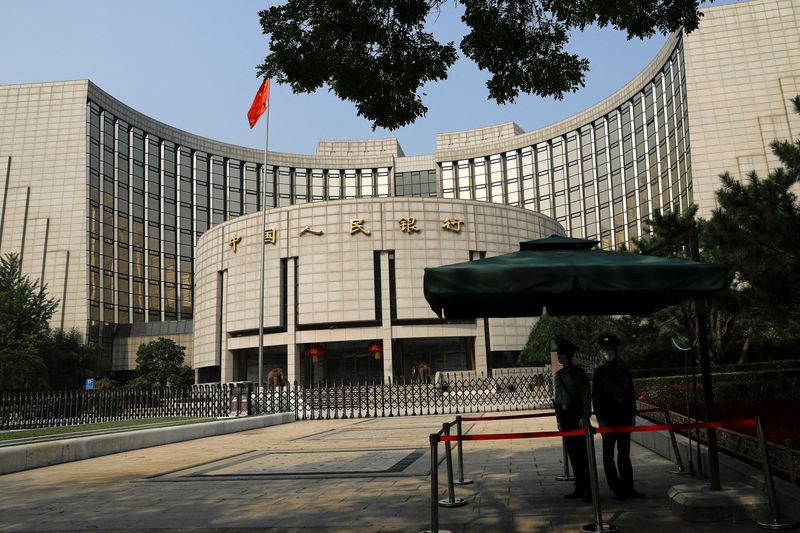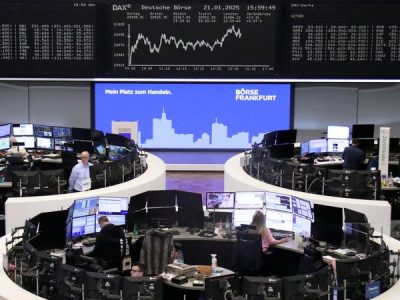
Investing.com — Taiwan, a small island nation with only 23 million people, plays an outsized role in the global tech industry and global economy, as per analysts at BofA Securities in a note dated Wednesday.
“It produces over 60% of the world’s semiconductors and 90% of the advanced chips, contributing 10% of the value-added in the global semi supply chain,” the analysts said.
This has bolstered Taiwan’s economic strength, especially as semiconductor demand has surged with the rise of artificial intelligence (AI).
Yet, analysts at BofA warn that Taiwan’s heavy reliance on its tech sector introduces substantial risks.
Taiwan’s tech sector has been a key driver of its economic growth. Over the past few years, Taiwan’s GDP growth rates were 3.4% in 2020, 6.6% in 2021, and 2.6% in 2022, largely fueled by semiconductor exports.
Even amid global economic volatility, Taiwan has sustained strong performance, helped by its tech exports. “We expect the AI-driven export recovery, along with better investment momentum, to help underpin solid GDP growth of 3.7% in 2024,” the analysts said.
However, this reliance on technology brings with it significant vulnerabilities. A large share of Taiwan’s economic activity is linked to tech exports, which account for over 60% of its total exports.
“Taiwan shipped as much as 35% of its exports to mainland China and Hong Kong in 2023, followed by the US (19%), ASEAN (18%) and Europe (10%),” the analysts said. This heavy concentration in trade connections poses considerable risks, as geopolitical tensions or trade disruptions could have serious consequences for Taiwan’s economy.
Despite attempts to diversify its trade partners with initiatives such as the New Southbound Policy, Taiwan continues to rely heavily on the tech sector.
While there has been some progress in redirecting foreign direct investment from China to other regions, these efforts have not fundamentally changed the inherent risks in Taiwan’s economic structure.
Additionally, Taiwan faces several structural constraints that compound its vulnerability. Energy security is a pressing issue; nearly 98% of Taiwan’s energy is imported, with a big portion coming from fossil fuels.
As the island moves to phase out nuclear power, the pressure on its energy supply is expected to intensify. The growing demand for electricity, driven in part by the tech sector’s needs, exacerbates this challenge, making energy policy reform a critical area of focus.
The shortage of skilled tech professionals is another major concern. Taiwan has been struggling with a talent gap, with a significant number of unfulfilled positions in the semiconductor industry. This issue is exacerbated by a declining youth population and fierce global competition for tech talent. Despite various government initiatives aimed at addressing these shortages, the gap remains a significant threat to the long-term sustainability of Taiwan’s tech sector.
Additionally, Taiwan’s macroeconomic stability is affected by large capital flows linked to the global tech cycle. These fluctuations make it difficult for Taiwan’s central bank to manage economic stability, contributing to volatility in property markets and other areas.
The rapid movement of capital, driven by tech cycles and geopolitical shifts, further complicates Taiwan’s economic management.
BofA analysts recommend that Taiwan pursue several strategic measures. Improving energy security is essential, and investigating new energy technologies, including advanced nuclear options, could help alleviate supply constraints.
Tackling talent shortages through enhanced educational programs and initiatives to attract international professionals is also important.
Moreover, Taiwan must accelerate its efforts to diversify its economy by investing in high-value industries such as semiconductor design, biotechnology, renewable energy, and intelligent machines.
Expanding the services sector, especially in areas like healthcare, could offer new avenues for growth.












